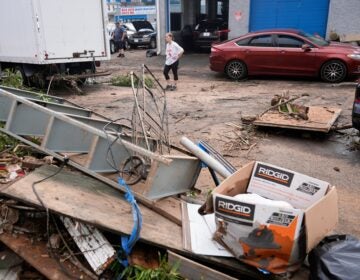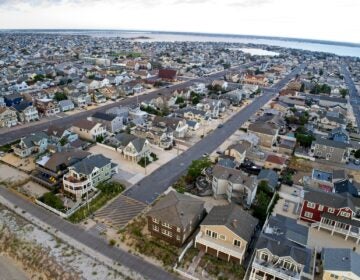South Jersey traffic congestion has Cooper University Hospital looking for alternatives
Cooper University Hospital, one of the largest employers in South Jersey, may offer cash incentives to employees to get them not to drive to work.
Cooper, which is still working out the details of its plan, figures the program will be cheaper than spending millions of dollars on a new parking garage said John Schwartz, Cooper’s vice president for Facilities and Support Services. Finding a parking spot on Cooper’s campus will get harder once the new medical school opens there in August and will become even more difficult after The Cooper Cancer Institute is scheduled to open in 2013.
“Everything is still under discussion,” said Lori Shafer, a spokeswoman for Cooper. Shafer says the hospital has no timeline in making a decision and was considering other alternatives which she declined to specify.
The Philadelphia area has the 14th worst congestion in the United States, far lower than Washington (1st), New York (5th) and Boston (9th), according to the Texas Transportation Institute. Drivers experienced 42 hours worth of delays in 2010.
Congestion in South Jersey, though, appears to be getting worse.
“People are maybe driving a little more than they have in the past,” says Ronda Urkowitz of Cross County Connections, a non-profit that encourages alternatives to driving single-occupancy vehicles. “People in South Jersey travel shorter distances so they are willing to sit in traffic a little.”
A recent survey of 837 Cooper employees shows a whopping 81% of workers, who mostly live in Camden, Gloucester and Burlington Counties, drive to work by themselves. Only a fraction used PATCO, New Jersey Transit or carpooling. About 44% of Cooper workers commute between 30 and 59 minutes.
Many Cooper workers drive through some of the most congested parts of the region because they have purchased homes in less sparsely populated municipalities that have since been built up. Indeed, four school districts in Gloucester -Swedesboro- Woolwich, South Harrison and East Greenwich and Kingsway Regional – each saw double-digit enrollment growth between 2008 and 2011. Much of the development in the region was done with the consideration of public transportation, said Matthew Norris, South Jersey Advocate for the Tri-State Transportation Campaign.
“We are kind of playing catch-up now,” he said.
Officials are considering several options to address the congestion issue, including a proposed $8.3 billion light-rail network between Camden and Glassboro along with enhanced bus service to alleviate traffic bottlenecks around Routes 55/42/676. The later would involve 26 buses running at 10-15 minute intervals between Winslow Township and Philadelphia City Hall.
“We are looking at many options right now,” said NJ Transit spokeswoman Nancy Snyder, in an interview. “There is no time line” in regards to making a decision on either project.
Both proposals could not come fast enough for Andy Gradel, Cooper’s Director of Internet Marketing who lives in Woolwich Township with his wife and two children. He estimates that he spends $250 a month on gas for his 2005 Jeep Liberty. Public transportation is not an option for him for his 300 mile per week commute that takes him through the heart of the region’s traffic problems.
“There have been times where it has taken me an hour and a half to get home because there is no alternative path,” he said. “If there were convenient public transportation, it is something that I would consider. .. I would take it in a heartbeat.”
WHYY is your source for fact-based, in-depth journalism and information. As a nonprofit organization, we rely on financial support from readers like you. Please give today.




